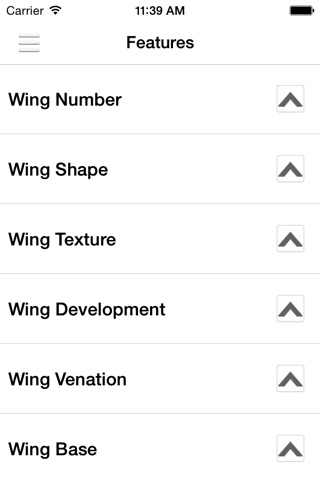
Key to Insect Orders app for iPhone and iPad
Developer: LucidMobile
First release : 21 Dec 2014
App size: 19.17 Mb
Insects make up the vast bulk of species diversity on the planet. Many millions of insect species exist and entomologists have divided them into a manageable number of units called Orders. The members of each insect Order have arisen from a common ancestor, share similar structural characteristics and have certain biological attributes in common.
Not all insect Orders are equal in species number; some Orders have just a few hundred species while others have more than 100,000 species. The range of structural characteristics and biological features tends to be broader in the more species-rich Orders.
Predictions about the biology, behaviour and ecology of an insect can be made once you know its Order. But how can you know the Order to which an insect belongs? Insects can be identified in various ways. Comparing a specimen with a book of illustrations of identified insects is one way. Using a printed key is another way. This Lucid based key combines the advantages of these methods and adds a new dimension of simplicity and power to the process of identification.
This simple identification key is designed to identify most common adult insects to Order in Australia. The key has been designed for use by advanced secondary students, beginning undergraduates and others interested in entomology. We have written the key so that students will learn about the structure and biology of insects while identifying them. We have included three groups of arthropods in this key (Protura, Collembola and Diplura) that are closely related to insects.
How can you tell if an insect is an adult and can be identified using this key? That is a simple question without a simple answer. If your insect has fully-developed, functional wings then it is an adult. However, some adult insects have reduced, non-functional wings and others have no wings at all. In these cases the adult forms have fully developed genitalia at the apex of the abdomen.
This app is powered by Lucid Mobile



